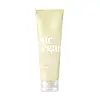What's inside
What's inside
 Key Ingredients
Key Ingredients

 Benefits
Benefits

 Concerns
Concerns

 Ingredients Side-by-side
Ingredients Side-by-side

Water
Skin ConditioningSodium C14-16 Olefin Sulfonate
CleansingCocamidopropyl Betaine
CleansingSalicylic Acid
MaskingSodium Chloride
MaskingTriethanolamine
BufferingDisodium EDTA
Phenoxyethanol
PreservativeButylene Glycol
HumectantCitric Acid
BufferingPropylene Glycol
HumectantMethylparaben
PreservativeEthylparaben
PreservativeDMDM Hydantoin
PreservativeArctium Lappa Root Extract
Skin ConditioningPropylparaben
PreservativeGlycerin
HumectantEpilobium Angustifolium Flower/Leaf/Stem Extract
Skin ConditioningCystoseira Amentacea/Caespitosa Branchycarpa Extract
Skin ConditioningWater, Sodium C14-16 Olefin Sulfonate, Cocamidopropyl Betaine, Salicylic Acid, Sodium Chloride, Triethanolamine, Disodium EDTA, Phenoxyethanol, Butylene Glycol, Citric Acid, Propylene Glycol, Methylparaben, Ethylparaben, DMDM Hydantoin, Arctium Lappa Root Extract, Propylparaben, Glycerin, Epilobium Angustifolium Flower/Leaf/Stem Extract, Cystoseira Amentacea/Caespitosa Branchycarpa Extract
Water
Skin ConditioningGlycerin
HumectantSodium Cocoyl Isethionate
CleansingHouttuynia Cordata Extract
Skin ConditioningHydroxypropyl Starch Phosphate
Potassium Cocoyl Glycinate
1,2-Hexanediol
Skin ConditioningCentella Asiatica Extract
CleansingBambusa Vulgaris Water
Skin ConditioningChamaecyparis Obtusa Water
MaskingBetula Platyphylla Japonica Juice
Skin ConditioningHouttuynia Cordata Powder
Skin ConditioningMalt Extract
Skin ProtectingGluconolactone
Skin ConditioningPotassium Cocoate
EmulsifyingButylene Glycol
HumectantAcrylates Copolymer
Ethylhexylglycerin
Skin ConditioningDisodium EDTA
Water, Glycerin, Sodium Cocoyl Isethionate, Houttuynia Cordata Extract, Hydroxypropyl Starch Phosphate, Potassium Cocoyl Glycinate, 1,2-Hexanediol, Centella Asiatica Extract, Bambusa Vulgaris Water, Chamaecyparis Obtusa Water, Betula Platyphylla Japonica Juice, Houttuynia Cordata Powder, Malt Extract, Gluconolactone, Potassium Cocoate, Butylene Glycol, Acrylates Copolymer, Ethylhexylglycerin, Disodium EDTA
 Reviews
Reviews

Ingredients Explained
These ingredients are found in both products.
Ingredients higher up in an ingredient list are typically present in a larger amount.
Butylene Glycol (or BG) is used within cosmetic products for a few different reasons:
Overall, Butylene Glycol is a safe and well-rounded ingredient that works well with other ingredients.
Though this ingredient works well with most skin types, some people with sensitive skin may experience a reaction such as allergic rashes, closed comedones, or itchiness.
Learn more about Butylene GlycolDisodium EDTA plays a role in making products more stable by aiding other preservatives.
It is a chelating agent, meaning it neutralizes metal ions that may be found in a product.
Disodium EDTA is a salt of edetic acid and is found to be safe in cosmetic ingredients.
Learn more about Disodium EDTAGlycerin is already naturally found in your skin. It helps moisturize and protect your skin.
A study from 2016 found glycerin to be more effective as a humectant than AHAs and hyaluronic acid.
As a humectant, it helps the skin stay hydrated by pulling moisture to your skin. The low molecular weight of glycerin allows it to pull moisture into the deeper layers of your skin.
Hydrated skin improves your skin barrier; Your skin barrier helps protect against irritants and bacteria.
Glycerin has also been found to have antimicrobial and antiviral properties. Due to these properties, glycerin is often used in wound and burn treatments.
In cosmetics, glycerin is usually derived from plants such as soybean or palm. However, it can also be sourced from animals, such as tallow or animal fat.
This ingredient is organic, colorless, odorless, and non-toxic.
Glycerin is the name for this ingredient in American English. British English uses Glycerol/Glycerine.
Learn more about GlycerinWater. It's the most common cosmetic ingredient of all. You'll usually see it at the top of ingredient lists, meaning that it makes up the largest part of the product.
So why is it so popular? Water most often acts as a solvent - this means that it helps dissolve other ingredients into the formulation.
You'll also recognize water as that liquid we all need to stay alive. If you see this, drink a glass of water. Stay hydrated!
Learn more about Water